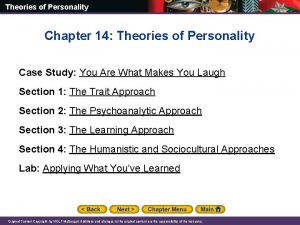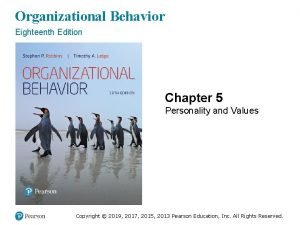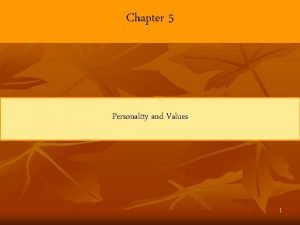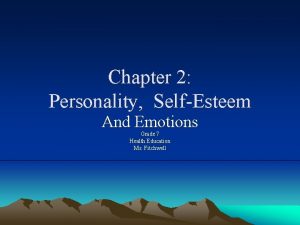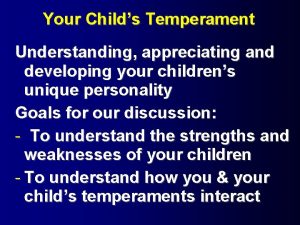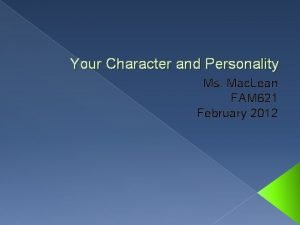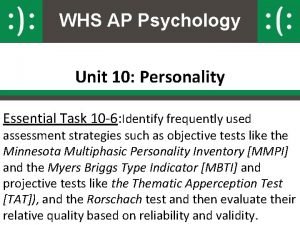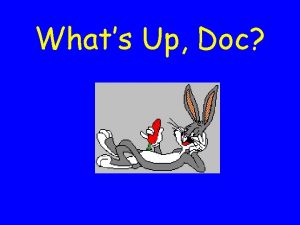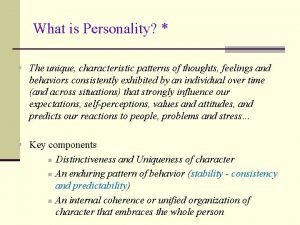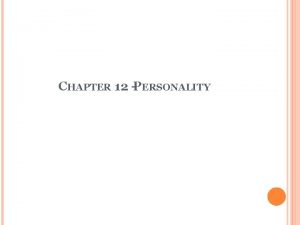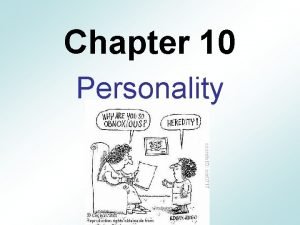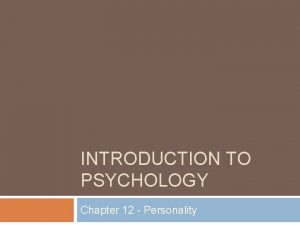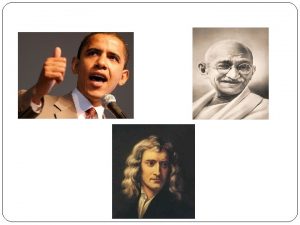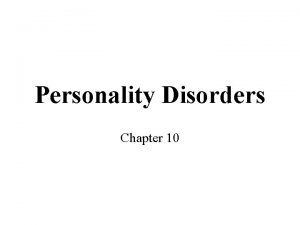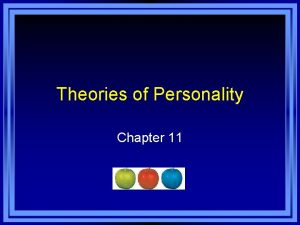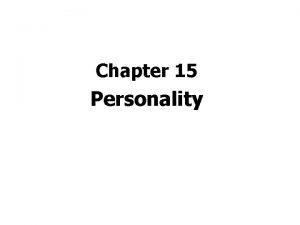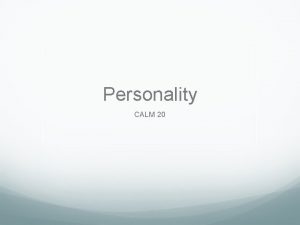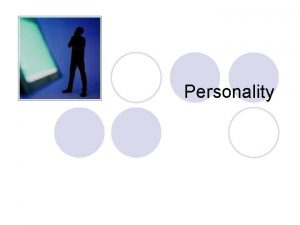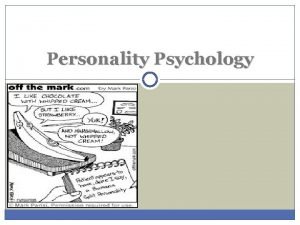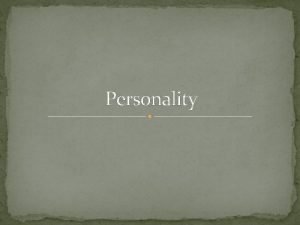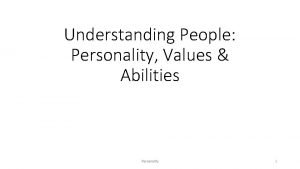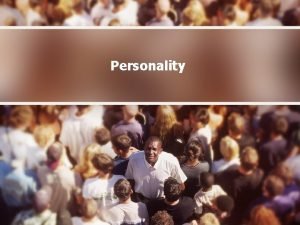Personality Chapter 12 What is Personality Personality is




























- Slides: 28

Personality Chapter 12

What is Personality? • Personality is an individual’s characteristic pattern of

Personality: Then and Now • Why we have personality – – Humanistic approach (Jung) • What personality is – Basic dimensionality of personality – – Interaction between individuals and environments

Psychoanalytic Perspective • Sigmund Freud • Developed idea of

The Unconscious Mind • Id •

Psychosexual Development • Oral (0 -18 mo. ) • (18 -36 mo. ) • Phallic ( ) • Latency (6 -Puberty) • (Puberty +)

Defense Mechanisms • As a member of society, the individual must repress ‘ ’ urges

Freud: Defense Mechanisms • Repression (has been shown to not exist) • • Reaction Formation •

Freud: Defense Mechanisms • • Displacement

Freud • One of the tests of this school of thought is the Thematic Apperception Test ( )

Humanistic Perspective • Maslow •

The Trait Perspectives • These theories tend to look for stable and enduring • Through factor analysis, psychologists have narrowed down possibilities to two distinct dimensions

Eysenck’s Personality ‘Map’

Biological Influences • Extraverts •

The Big Five • The best approximation of how many distinct personality constructs exist currently rests at • Set up as dichotomy between

The Big Five

The Big Five • Openness to Experiences • • Extraversion • • Neuroticism

Predictability of Behavior • Short answer: No

The Social Cognitive Perspective • Proposed by Albert Bandura • Focus on the interactions between individual and

Notes:

Personal Control • Locus of Control • • Optimism vs Pessimism

Locus of Control • Who has the control in the situation? – External Control: – : Me • Internals: – Able to delay gratification, more independent –

Learned Helplessness • The that an animal or human learns when unable to avoid an event

Optimisim vs Pessimism • Optimist • • Realist

Exploring the Self • Possible Selves •

Self Esteem • The basic feeling that you have self worth

Self Esteem and Culture • Several theories on ‘why’ we have it – – Sociometer • People who experience prejudice do not suffer from lower self esteem

Self Serving Bias • The readiness to perceive the self as in almost any light which most people have
 Chapter 14 theories of personality worksheet answers
Chapter 14 theories of personality worksheet answers Organizational behavior chapter 5
Organizational behavior chapter 5 Personality objectives
Personality objectives Chapter 2 personality self-esteem and emotions
Chapter 2 personality self-esteem and emotions The red tent summary chapter by chapter
The red tent summary chapter by chapter Summary of gatsby chapter 8
Summary of gatsby chapter 8 Chapter 10 chemical reactions answer key
Chapter 10 chemical reactions answer key Chapter 11 assessment chemistry
Chapter 11 assessment chemistry Chapter 9 chemical reactions study guide
Chapter 9 chemical reactions study guide Similarity ratio definition
Similarity ratio definition Chapter 6: career readiness
Chapter 6: career readiness 7 ionic and metallic bonding
7 ionic and metallic bonding Chapter 9 surface water answer key
Chapter 9 surface water answer key Chapter 2 study guide representing motion
Chapter 2 study guide representing motion The central science 14th edition
The central science 14th edition Chapter 7 ionic and metallic bonding answer key
Chapter 7 ionic and metallic bonding answer key Chapter test a chapter 4 population ecology answer key
Chapter test a chapter 4 population ecology answer key Chapter 2 chapter assessment
Chapter 2 chapter assessment Background of the book of philippians
Background of the book of philippians Properties of ionic compounds
Properties of ionic compounds 7 ionic and metallic bonding practice problems
7 ionic and metallic bonding practice problems Tribromine octoxide formula
Tribromine octoxide formula Color personality profile
Color personality profile Phlegmatic personality
Phlegmatic personality Difference between character and personality
Difference between character and personality Tat test ap psychology
Tat test ap psychology Simpsons myers briggs characters
Simpsons myers briggs characters Whats up do
Whats up do Characteristic patterns
Characteristic patterns
